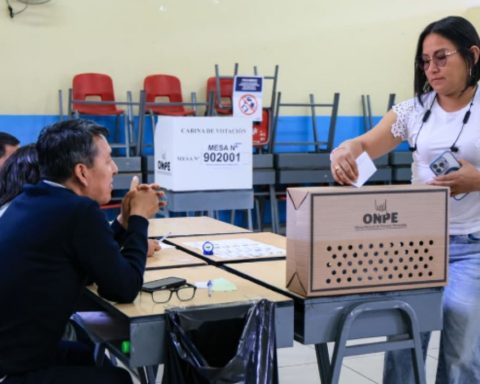The Middle East respiratory syndrome virus, known as “Camel Virus”, which affects at least three players of the French National Team that will face Argentina in the final of the World Cup in Qatar 2022, “it can cause severe pneumonia or flu, it is less contagious than Covid-19 but it is equally transmitted by air, so prevention measures they are the same, according to an infectologist remarked.
“The virus referred to the infections of French players, associated with camels, is surely the one that causes MERS (for its acronym in English), a coronavirus that has generated different outbreaks in the last two decades in the Middle East, mainly due to the reservoir that camels have and it has been shown to have less contagious power to date, compared to what we know about SARS-CoV-2, which causes the coronavirus”, The head of the infectious disease service of the Cuenca Alta Hospital, in Cañuelas, Javier Farina, informed Télam this Thursday.
How it affected the France team
Forward Kingsley Coman got infected in the last few hours of the so-called “Camel Virus”, a kind of flu that it also affected defender Dayot Upamecano and midfielder Adrien Rabiotand sparked concern in the French team three days before the World Cup final against Argentina.
France coach Didier Deschampsrevealed to the Spanish sports newspaper AS, that Coman “had a fever in the morning” and had to remain isolated in the hotel, in addition to trying to take “all possible care so that the virus does not spread to the rest of the squad.”

Consulted about the virus, Farina – also a member of the Argentine Society of Infectious Diseases (SADI) – explained that “it can give a picture of severe pneumonia or a trivial respiratory picture, like the flu, but it is more lethal than SARS COV2, mainly because the condition is much greater in the lungs than in the upper airways of the coronavirus.”
As reported on its website by the World Health Organization (WHO), a high rate of patients, about 35% of the cases of people with MERS reported to that body, died.
How is it related to the coronavirus?
Farina noted that MERS and SARS, dubbed SARS CoV1 to distinguish it from SARS CoV2, first detected in Saudi Arabia in 2012, “These are two coronaviruses that have caused outbreaks in several Member States in the Middle East, Africa and South Asia, although they have been contained and have not spread globally to date.”
According to the WHO, person-to-person transmission of the MERS virus “is possible and occurred predominantly among close contacts and in health care settings.”
“The largest outbreaks occurred in health facilities in Saudi Arabia, the United Arab Emirates and South Korea. Outside of health care settings, sustained person-to-person transmission has not been documented anywhere in the world,” he said. the international organization.
While, Fariña indicated that since it is a virus that is spread through the air, like SARS CoV2, “the prevention measures are the same, such as the use of a mask, social distancing and places with poor ventilation and crowding of people are the more propitious for contagion”.
It is expected that the permanent exposure to air conditioning and the change in temperatures that occur in the environments in Qatar, in addition to the change in weather in recent days, caused the spread of this flu variant, which presents symptoms such as fever, cough, diarrhea and vomiting.
Likewise, The infectious disease doctor recalled that for this virus “there is no promptly effective treatment or vaccine to date.”


















